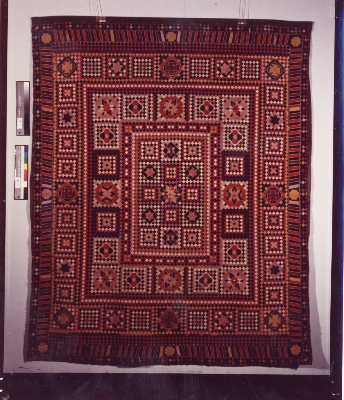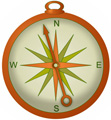Quilt No.683NTV - National Trust of Australia (VIC)

2280 x 1380mm
The quilt was probably made by Mrs. Radin in Austria pre the 1880s. It was donated to the National Trust of Australia (Victoria) by L.Radin, grandson of the maker, in 1978.
The quilt is stored in the National Trust costume and textile store Melbourne.
"Known as the 'Indian Army Quilt' because some of its colours are said to be the regimental colours of the Indian Army.
Donated to National Trust in 1978 by Mr. L.Radin of Brighton, Victoria. The quilt was made by his grandmother in Austria or Dubrovnik. She gave it to her son Frank Radin, who was a sail maker in Launceston, after arriving from Dubrovnik in ca 1885-1890. He had the quilt with him and brought it to Melbourne in 1901 - his son was L.Radin, donor. Some sources say Frank Radin brought the quilt incomplete to Australia and finished it himself, and that he moved to Melbourne in 1922."
[Belinda Nemec, Manager of Collections, National Trust of Australia (Victoria) 9.2.2000]
Related Quilts:
2480 x 1420 mm
2160 x 1830mm
1800 x 1630mm
2083 x 1626mm
1750 x 1100mm
2135 x 2033mm






